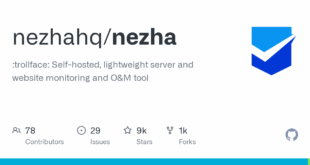In this article, we’ll discuss what search intent is and how it can help improve your SEO. Then we’ll share a few strategies for optimizing your content for search intent.
For many site owners, improving Search Engine Optimization (SEO) is something to continually strive for. Finding new ways to boost optimization can give your site the extra push it needs to gain additional visibility. ‘Search intent’ is one SEO factor you may not yet be considering.
What Is Search Intent And Why Is It Important to SEO
Search intent refers to the results a user hopes to see when they enter a keyword into a search engine. It’s sometimes broken into categories. Three of the most common search intents include informational, navigational, and transactional.
Informational search intent refers to users who are searching in order to learn something, whether it’s directions to a restaurant or facts on a certain subject. Navigational searchers are trying to get to a particular web page. For example, they may type “facebook” into Google in order to get to their Facebook profile, instead of navigating directly to the website.
Finally, transactional searchers are attempting to take action. This could be simply making a purchase, but it also includes those looking to sign up for an email list or join an online community. There are other types of search intent, but these three encompass a large number of search engine users.
Once you’ve considered your potential users’ search intent, you can create content to cater to their needs and desires. Providing information on a blog, making it faster and simpler to navigate to your site, and including clear paths to complete transactions will help draw more users to your pages.
Optimizing your site for search intent can lead to increased page views, as well as increased sales for e-commerce sites. It also helps establish a wider audience by increasing your brand’s visibility on Search Engine Results Pages (SERPs). This could improve your brand authority and increase your number of returning customers.
How Can You Factor Search Intent Into Your SEO Efforts? (3 Strategies)
You may have to make some changes to your site to account for search intent. However, the effort of carrying out these strategies could prove worth the time and energy if it brings more users or customers to your site – let’s take a look.
1. Draw In Informational Searchers Using ‘Query Language’ in Your Titles
Informational searchers are seeking answers, so their searches sometimes take the form of questions. For example, if you found yourself in a situation where you needed to change a tire on your car, you might type “how to change a tire” into Google.
Query language refers to the words we commonly use when asking questions. Words such as “how” and “why” are examples frequently used by searchers, but “when”, “where”, “what”, and “who” constitute query language too. Using these kinds of words in your titles can help improve your SERP rankings.
Titles that start with “How to”, “Why do”, and “What is” are more likely to match what informational searchers type into search engines. If your titles exactly match what searchers are looking for, search engines are more likely to rank your pages higher, and searchers are more likely to click through to your pages.
2. Attract Navigational Searchers with Landing Pages
As of the end of 2018, “facebook” is the number one most common Google search. It’s followed by several other brand names, including “youtube”, “amazon”, and even “google”. The practice of navigational searching is a popular one.
Creating highly optimized landing pages can help you attract this type of searcher. Because they’re easier to optimize than home pages, you can design landing pages that will rank high for specific keywords you’d like to target, like your brand’s name or the title of a popular product.
Landing pages are easier for users to navigate than home pages because they have fewer menus and options. It’s also easier for you to guide users where you want them to go, encouraging them to sign up for email lists, make purchases, or other activities that will help you convert them into returning users.
3. Entice Transactional Searchers with a Clear Call to Action (CTA)
In addition to helping direct navigational searchers your way, landing pages can make it easy for transactional searchers to find what they’re looking for. Landing pages dedicated to making purchases, creating a user account, or signing up for you email list can boost your user engagement by simplifying these actions.
What’s most important for transactional searchers is a clear CTA. They’ve conducted a search in order to perform an action, and the easier it is for them to complete their task, the better. If your site’s navigation is too complicated, and it’s not obvious what the searcher should do once they’re on your site, you’ll have a hard time converting these potential users.
Making your CTA the main focus of your landing pages will help users quickly find your site and complete their transaction. Using forms or buttons so users can purchase your most popular product, sign up for your email list, or even find your brand on social media without leaving the page simplifies the process for them, and makes for a better user experience.
Conclusion
Finding additional strategies for optimizing your site can help drive new users your way. Search intent plays a role in how search engines display information, and can help you improve your rankings to become more visible to potential users.
In this article, we’ve talked about what search intent is and how it can help you in your SEO efforts. We’ve also shared three ways you can optimize your site for search intent:
- Draw in informational searchers with query language in your titles.
- Attract navigational searchers with landing pages.
- Entice transactional searchers with a clear CTA.
Do you have questions about search intent and how you can use it to improve your SEO? Let us know in the comments section below!







